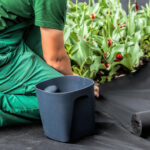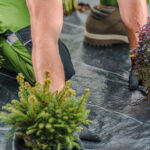Sandbags are essential for flood control, erosion prevention, and construction support. Understanding their significance and varied applications helps choose the right type for specific needs. This blog will explore what sandbags are, the materials used to make them, their diverse uses, tips for selecting the perfect sandbag, and where to purchase them.
What Are Sandbags?
Sandbags are sturdy bags filled with sand or soil, used primarily for flood control and erosion prevention. They are versatile and essential tools in many emergency and construction situations. Understanding their different types can help you choose the right one for your needs.
What Materials Are Used?
Sandbags come in various materials, each with its unique characteristics and benefits.
Polypropylene
This material is strong and water-resistant, making it ideal for flood control. Polypropylene sandbags are durable and can withstand harsh weather conditions, providing long-term protection.
Other Materials
- Recycled Plastics: These pp sandbags are made from repurposed materials, offering a sustainable option without compromising strength.
Comparison
- Durability: Polypropylene sandbags are the most durable. Burlap and biodegradable bags are less so but are environmentally friendly.
- Cost: Polypropylene and recycled plastic bags are more cost-effective in the long run due to their durability. Burlap and biodegradable options might be cheaper initially but need frequent replacement.
- Environmental Impact: Burlap and biodegradable bags are the best for the environment. Recycled plastic bags also offer a sustainable choice. Polypropylene bags, while durable, are less eco-friendly.
What are Sandbags Used For?
- Flood Control: BOPP sandbags are essential for building temporary barriers to keep floodwaters from entering homes and businesses. They help divert water from critical infrastructure, providing immediate protection during heavy rains and storms.
- Erosion Prevention: Woven PP sandbags stabilize riverbanks and shorelines, preventing soil erosion. They are commonly used in construction sites and agricultural areas to protect against the gradual loss of land due to water flow.
- Military Applications: In military settings, sandbags create protective barriers and fortifications. They help build temporary bunkers and shelters, offering safety and defense in conflict zones.
- Construction Support: BOPP sandbags provide weight and stability for scaffolding and temporary structures on construction sites. They also control water flow, preventing water damage during construction activities.
- Emergency Response: During natural disasters, sandbags can be quickly deployed to offer immediate protection. They reinforce levees and dams during high water events, helping to mitigate the impact of floods.
- Agricultural Use: Polypropylene Sandbags create barriers to protect crops from flooding and manage irrigation. They help control water flow in fields, ensuring water reaches the intended areas without causing damage.
- Outdoor Events: At festivals and events, PP sandbags secure tents, signs, and equipment. They also provide stability in muddy conditions and create temporary walkways and paths for attendees.
- Road Safety: In road construction and repair zones, sandbags act as temporary barriers to direct traffic and prevent vehicles from entering dangerous areas. They ensure the safety of both workers and drivers.
- Landscaping: Sandbags are used to create garden beds and retain soil. They can also be used as weights for various home projects, providing a simple solution for DIY enthusiasts.
How to Choose the Perfect Sandbag
Choosing the right sandbag involves considering several important factors:
Material
The material of the sandbag is crucial. Polypropylene and Biaxially Oriented Polypropylene is strong and water-resistant, making it ideal for flood control. Burlap is biodegradable and eco-friendly but less durable. For temporary uses, consider biodegradable options or recycled plastics.
Size and Capacity
BOPP sandbags come in different sizes and capacities. Larger bags are better for flood control, as they cover more area. Smaller bags are easier to handle and place and are suitable for erosion prevention and construction support. Choose a size that fits your needs and the sand you plan to use.
Specific Needs
- Flood Control: Use durable, water-resistant bags like polypropylene.
- Construction: Opt for bags that are strong and can withstand rough handling.
- Erosion Prevention: Choose bags that are easily placed and secured in the landscape.
Tips for Assessing Quality and Durability
- Check Seams: Strong seams are essential to prevent bags from bursting.
- Test Material: Ensure the material is thick enough to handle the weight and conditions.
- UV Resistance: UV-resistant bags last longer under the sun for outdoor use.
Where to Buy BOPP and PP Sandbags
Anita Plastics is a trusted source for purchasing high-quality BOPP and PP sandbags. We specialize in manufacturing a wide range of polypropylene fabric bags, including durable and efficient polypropylene sandbags. Our PP sandbags are ideal for flood control, erosion prevention, construction support, and more.
At Anita Plastics, you can find sandbags that meet stringent industry standards, ensuring they perform well under various conditions. Their bags are available in different sizes and materials, allowing you to choose the perfect option for your needs. By choosing Anita Plastics, you are guaranteed high-quality products that provide excellent value and reliability.
Additional Tips and Best Practices
Using BOPP and PP sandbags effectively involves knowing how to fill, seal, store, and safely handle them. Here are some best practices:
Proper Filling and Sealing
- Filling: Fill sandbags about two-thirds full. Overfilling makes them hard to stack and less effective.
- Sealing: Fold the top of the bag over tightly and tie it securely. This prevents sand from leaking out and ensures a better seal.
Storage Tips for Maintaining Sandbag Quality
- Dry Storage: Store sandbags in a dry place to prevent mold and deterioration.
- Stacking: Stack bags neatly to avoid damage. Use pallets to keep them off the ground and reduce exposure to moisture.
Safety Precautions
- Lifting: Use proper lifting techniques to avoid injury. Bend your knees and keep your back straight.
- Handling: Wear gloves to protect your hands from abrasions. If you’re working in wet conditions, wear waterproof gear.
Our sandbags are designed with built-in handles and drawstrings. These features provide a more secure grip, reducing the risk of slippage and making lifting and carrying the sandbags easier. The handles allow for better leverage, minimizing strain on your back and arms, while the drawstrings ensure the contents are securely contained, preventing spillage and enhancing overall safety and convenience during use.
Sandbags are versatile tools for flood control, erosion prevention, construction support, and more. Understanding the different materials used and how to choose the right sandbag ensures the best performance for your needs. Proper filling, storage, handling practices, and environmental considerations are key to maximizing their effectiveness and lifespan. Following these guidelines, you can make informed decisions that balance functionality, safety, and sustainability, ensuring your projects are well-protected and environmentally responsible.




